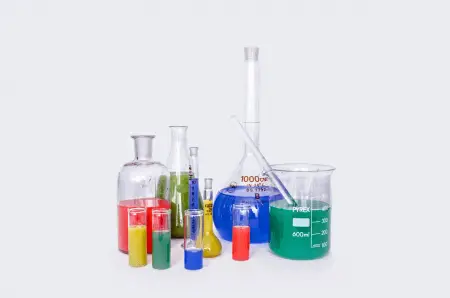We learned about intensive and extensive properties in Chemistry.
However, not all of us are still able to differentiate them. If you do know their difference, then kudos to you!
But if you need a quick refresher about this topic, you’re in the right place. In this article, we will discuss the difference between intensive and extensive properties.
Summary Table
| Intensive Properties | Extensive Properties |
| Properties that are not affected by the quantity of matter; “intrinsic” or essential to the nature of the substance | Properties that depend on the extent of the matter |
| Examples are color, pressure, density, temperature, boiling and melting point, state of matter, odor, hardness, malleability, ductility, etc. | Examples are volume, mass, size, weight, energy, momentum, heat capacity, etc. |
Descriptions

Intensive properties are properties that are not affected by the quantity of matter. They are “intrinsic” or essential to the nature of the substance. For instance, if I pour two cups milk into a bowl, and add two more cups later, the color of the milk, which is one of its intensive properties, will remain the same.
Other examples of intensive properties are:
- Pressure
- Density
- Temperature
- Boiling point
- Melting point
- State of matter
- Odor
- Hardness
- Malleability
- Ductility
Conversely, extensive properties are properties that depend on the extent of the matter. For instance, if you add a kilo of flour to another kilo of flour, the heaviness or weight of the flour will double. Here are examples of extensive properties:
- Mass
- Size
- Volume
- Length
- Total momentum
- Energy
- Heat capacity
One simple way to distinguish intensive properties from extensive properties is to take two samples of the same substance. If the property is altered or doubled when you combine the two samples, the property is extensive. If the property is not affected, it is intensive.
Intensive vs Extensive Properties
What, then, is the difference between intensive and extensive properties?
The greatest difference between the two is that intensive properties are not affected by the quantity of the matter, whereas extensive properties are affected by the extent of the matter. For instance, if you add another cup of coffee to your existing cup of coffee, the color and odor of the coffee (both intensive properties) will still be the same. However, the volume of the coffee (an extensive property) will change.
Other examples of intensive properties include temperature, density, the state of matter, pressure, boiling and melting point, hardness, malleability, ductility, etc. Common examples of extensive properties are mass, size, weight, energy, momentum, and heat capacity.





